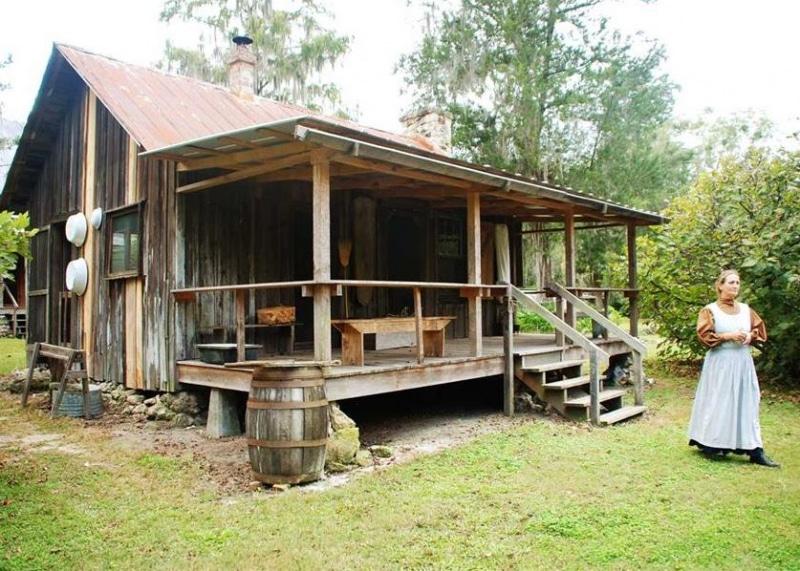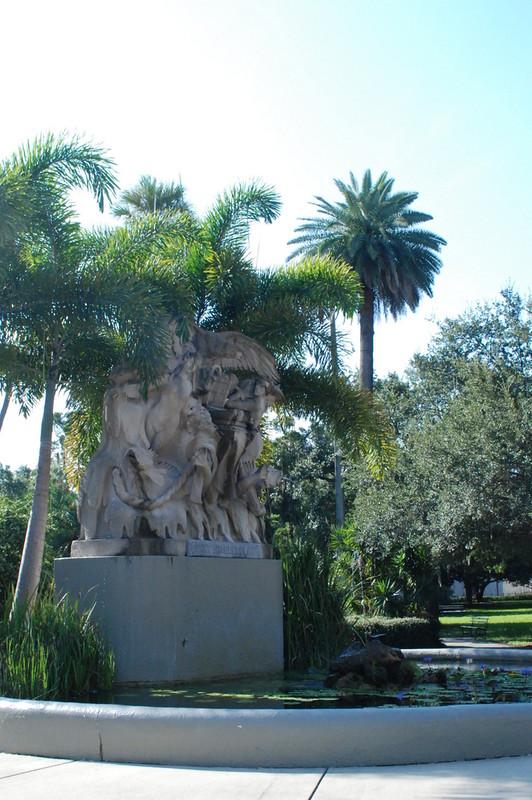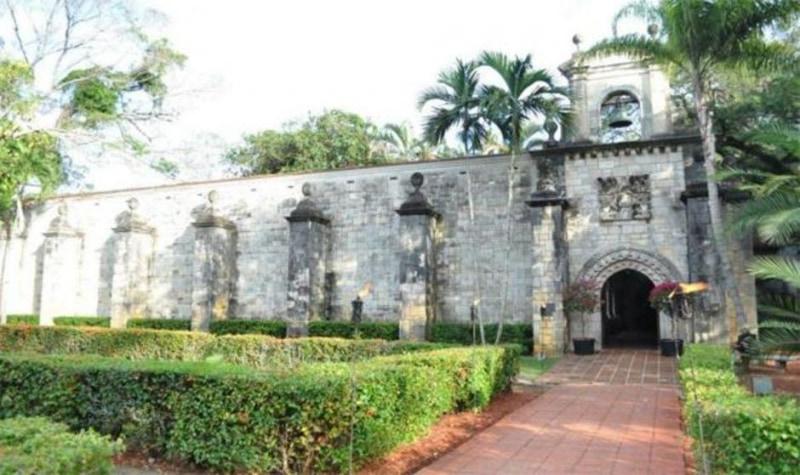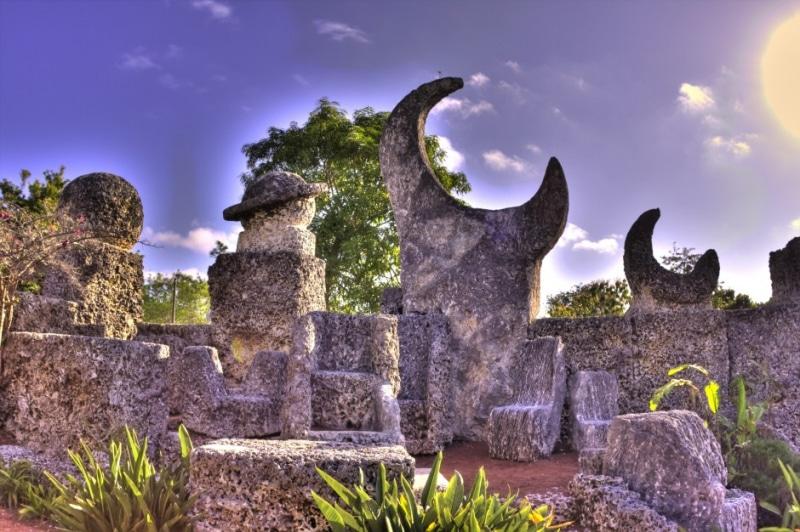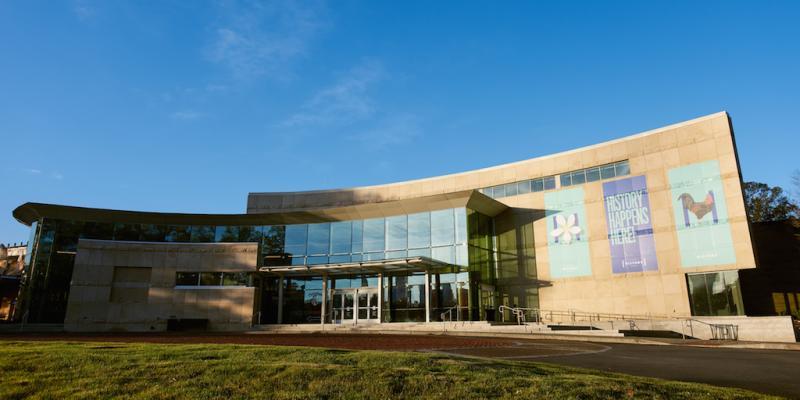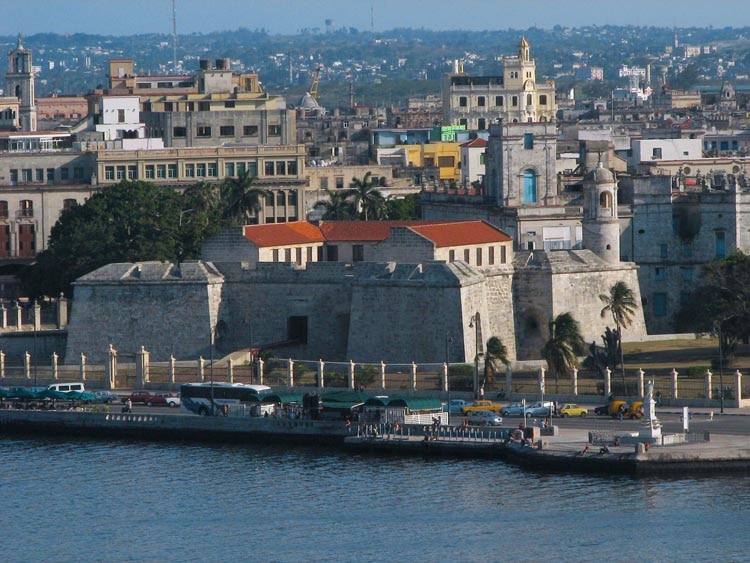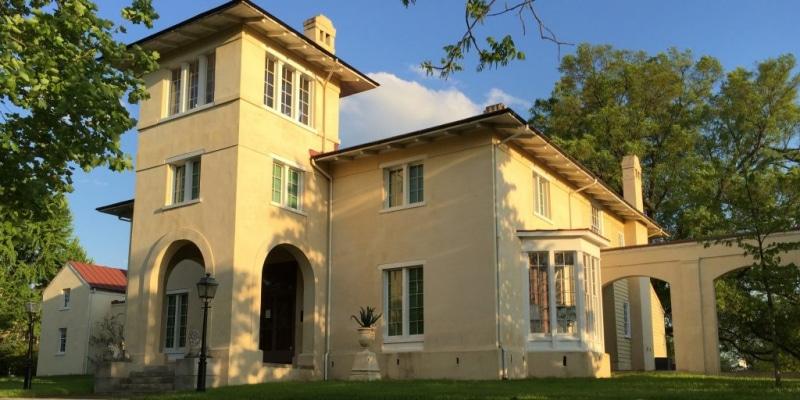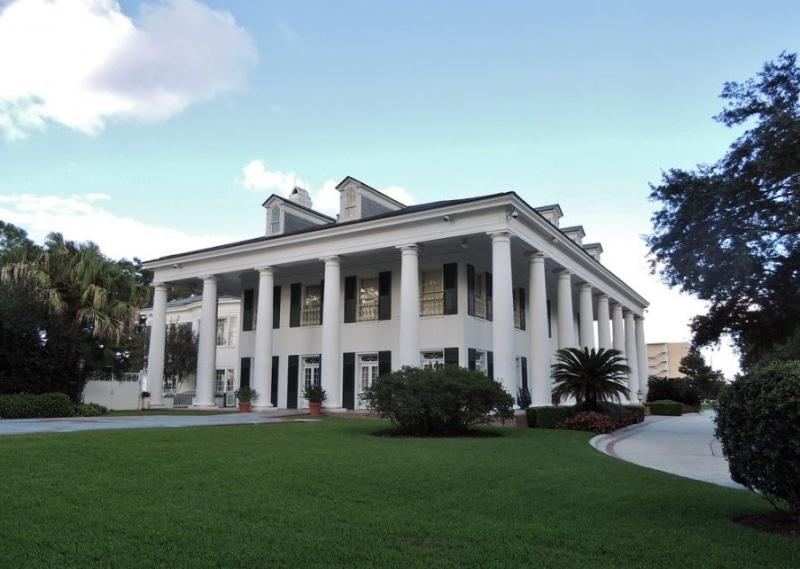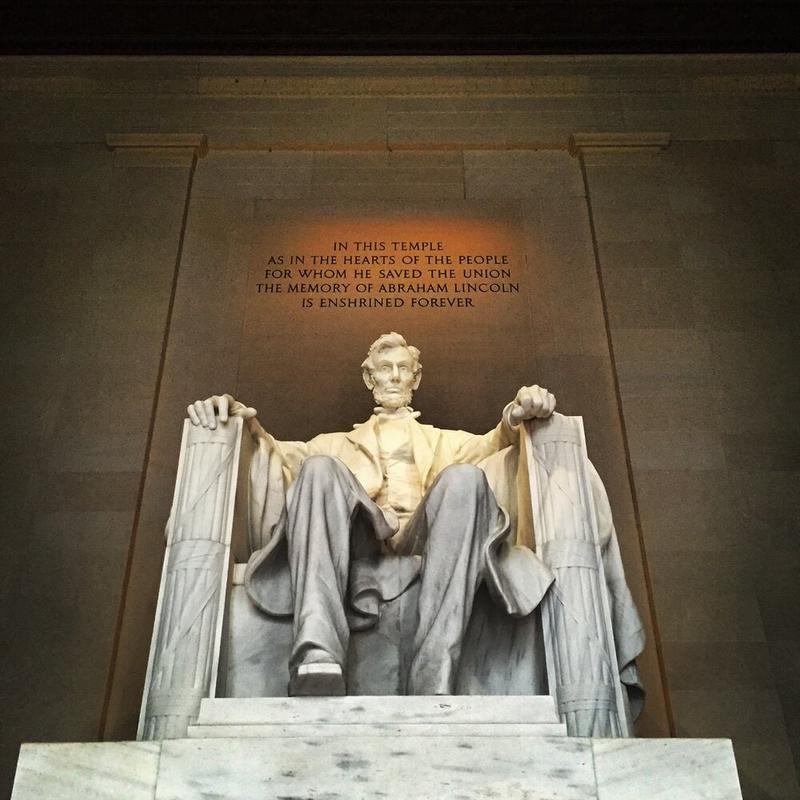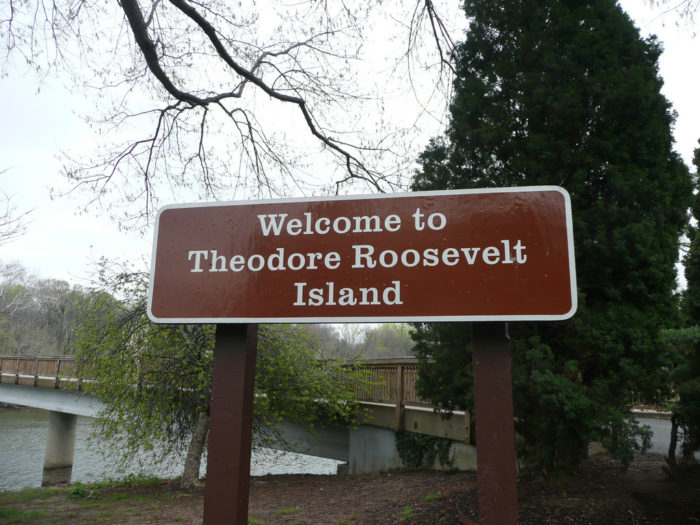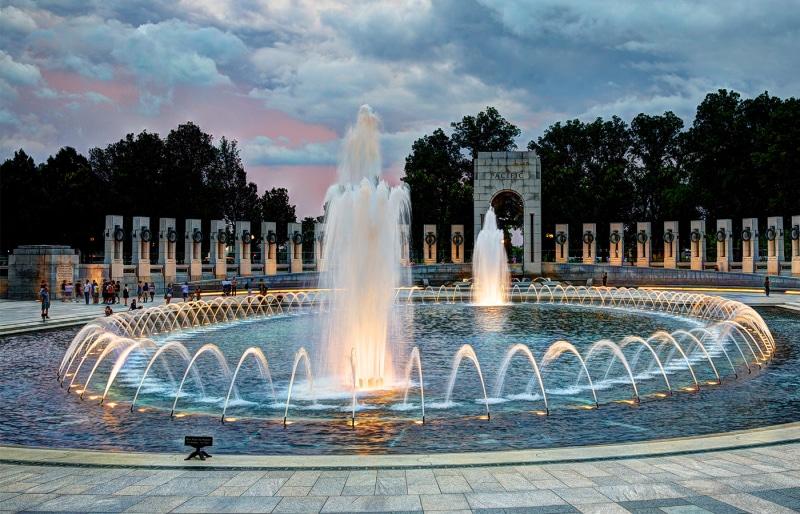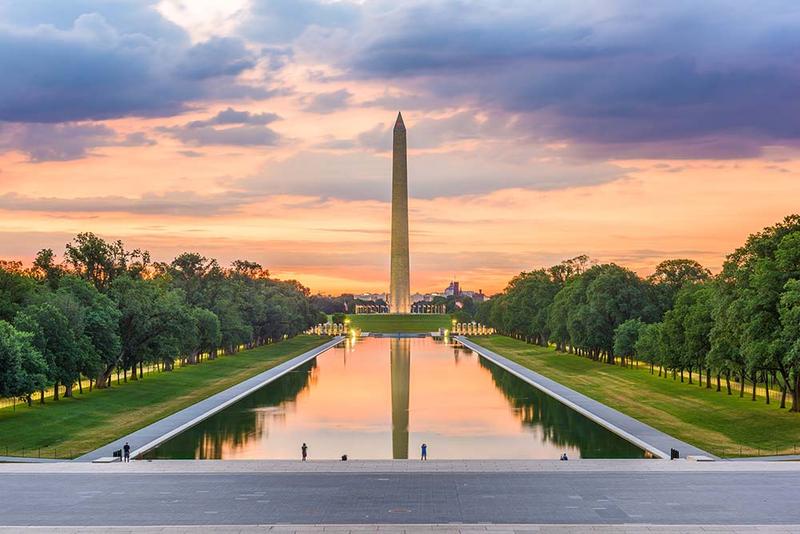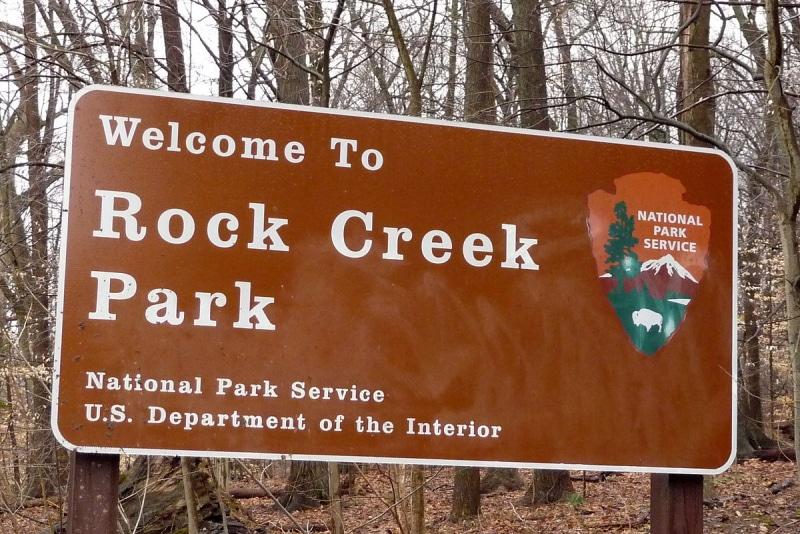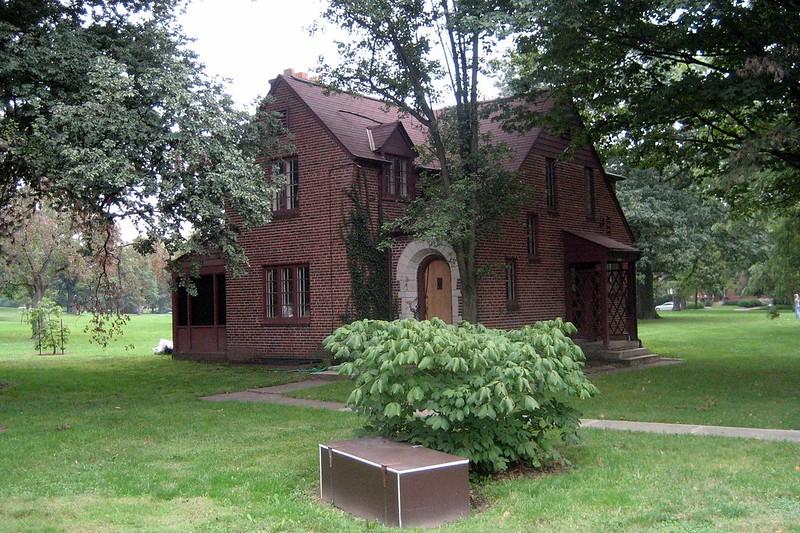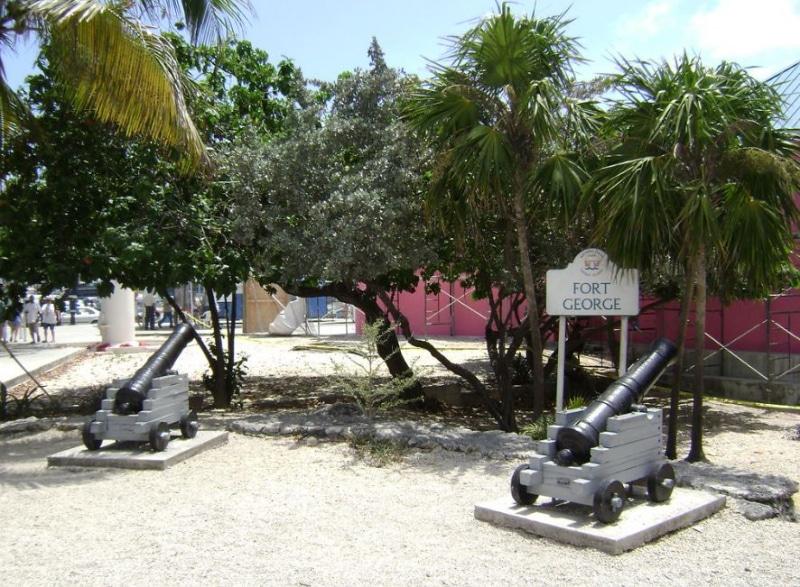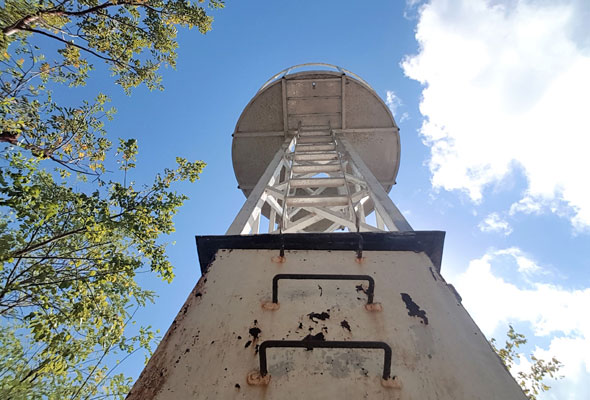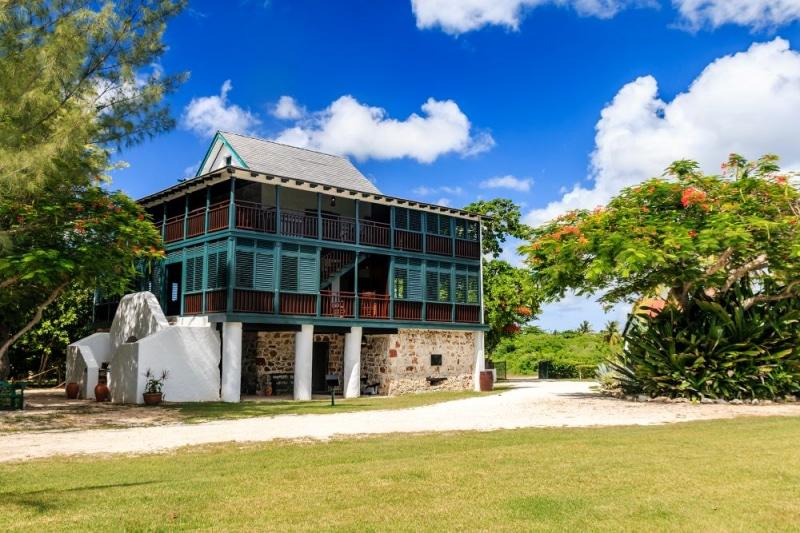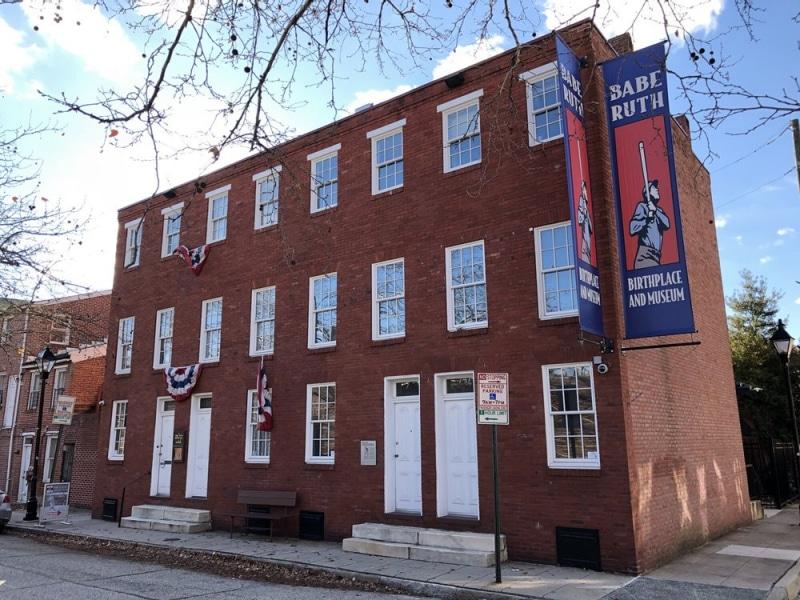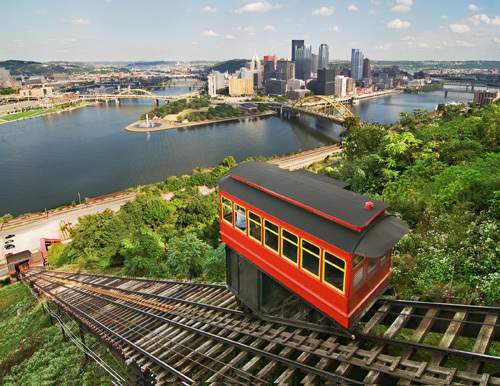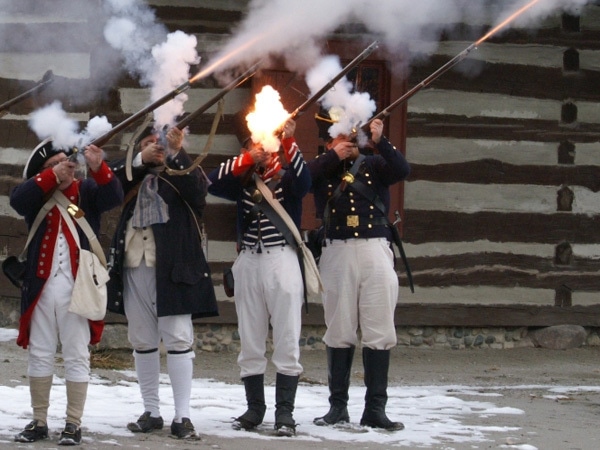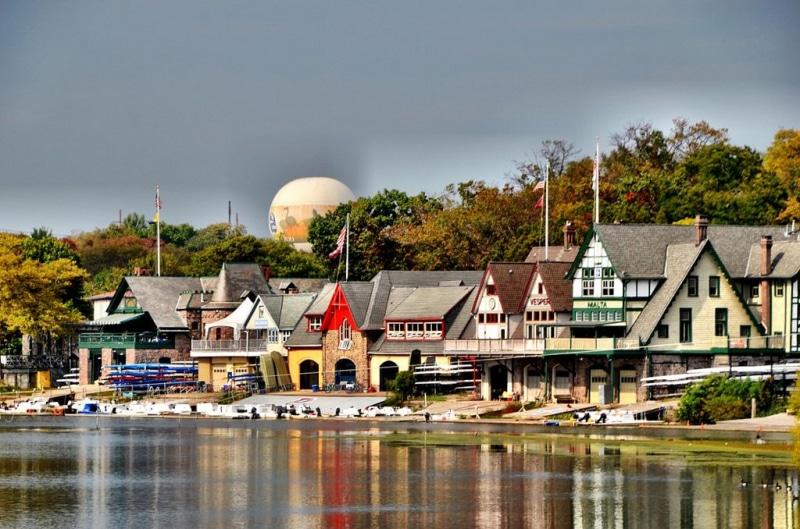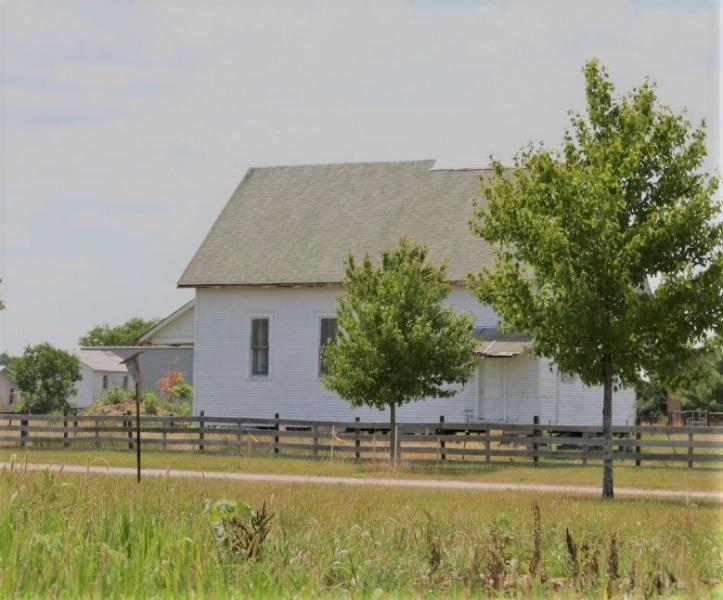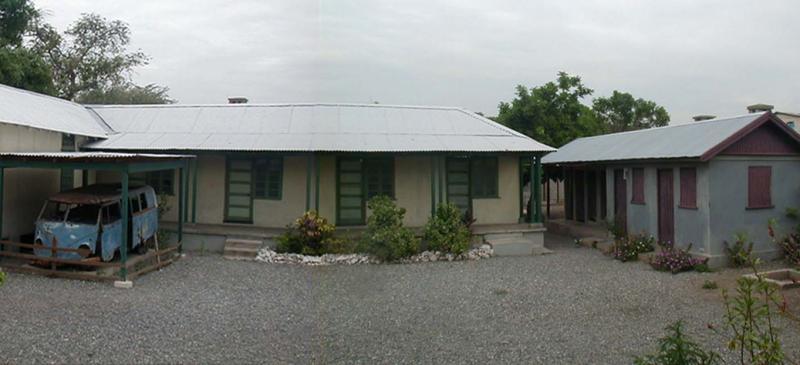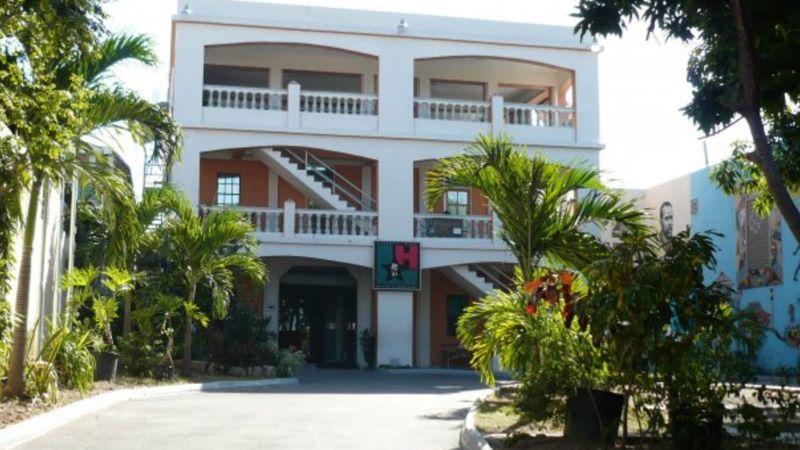HistoricalSites, Gainesville
Removed from Unnamed collection
Dudley Farm Historic State Park
At Dudley Farm, a one-of-a-kind authentic 325-acre working “Cracker” farm, you will see the evolution of North Florida farming through the eyes of three generations of the Dudley family; from the pioneer days circa 1850 through the introduction of gasoline-powered equipment circa 1945.
Dudley Farm Historic State Park is listed on the National Register of Historic Places. Some highlights include a visitor center, park staff in period clothing performing chores, production and harvest of heritage crop varieties and sugar cane, raising of heritage livestock varieties including Cracker cows and Barred Rock chickens, family farmhouse with original furnishings, general store and post office, 1880s kitchen outbuilding, cane syrup complex with autumn cane grinding, boiling, bottling, seasonal corn shucking, nature trail and picnic area. https://www.visitgainesville.com/explore/attraction/dudley-farm-historic-state-park/
Map
Explore more places related to this search:
Removed from Unnamed collection
Henry B. Plant Museum
The Henry B. Plant Museum is housed in the 1891 Tampa Bay Hotel, the Victorian railroad resort that defined the elegant frontier, now a National Historic Landmark. Unlike most museums dedicated to lifestyles of the past, it contains the actual furnishings enjoyed by the first guests to visit here. The Museum accurately reflects the opulence of turn-of-the-century America and the vision of American transportation pioneer, Henry B. Plant.
The Museum seeks to transport the visitor through educational exhibits and events to the late Victorian period, the beginning of Florida’s tourist industry, and the early years of the city of Tampa. http://www.plantmuseum.com/
Map
Removed from Unnamed collection
Ancient Spanish Monastery
Hidden in modern North Miami Beach, the Ancient Spanish Monastery takes us back. An enclave of European architecture and history, this Florida Heritage site—which was originally built in Sacramenia, a municipality of Segovia in northern Spain—has endured a long and interesting history to become the South Florida monument we know and love today.
“The Ancient Spanish Monastery is a little piece of Spanish history,” says Father Gregory Mansfield, Curator of the Ancient Spanish Monastery Museum & Gardens. “Construction began in 1133 AD, almost 360 years before Columbus left Spain and arrived in the Americas, and it took eight years to complete. There are over 35,000 stones, some of which weigh a ton and a half.”
In the 21st century, the Ancient Spanish Monastery serves as both a peek into history and a tourist attraction. At the entrance to the property, there’s a museum with historic Spanish artifacts like a hymnarium and pieces of armor worn during the Crusades. In that same building, there is also a gift shop with souvenirs available for purchase. http://www.miamiandbeaches.com/attraction/ancient-spanish-monastery/100839
Map
Removed from Unnamed collection
Coral Castle Museum
A modern day world marvel, it’s worth the journey down south to the Coral Castle Museum in Homestead. As a tribute to his long lost love, a tiny Latvian immigrant who only weighed 100 pounds, moved and sculpted more than 1,000 tons of coral rock for nearly 30 years, until the project was completed in 1951. The feat has baffled scientists and engineered for years.
Since 1923 Scientists, Engineers, Scholars continue to be amazed! See a hand-carved 9-ton gate, a Polaris telescope, the world’s only Sundial with seasons. Enjoy a movie short about the mysteries of Coral Castle, its creator; Edward Leedskalnin. Relax at the Coral Castle Café and enjoy the delicious gourmet menu. Visit the unique gift shop with Coral Castle collectables, science, natural stones, jewelry and much more! http://www.miamiandbeaches.com/attraction/coral-castle-museum/102397
Map
Removed from Unnamed collection
The Atlanta History Center
The Atlanta History Center is located in one of Atlanta’s most vibrant neighborhoods where the stories, mysteries and crusades of our region thrive. Our 33-acre experience features award-winning exhibitions, historic houses, enchanting gardens, interactive activities and a variety of year-round adult and family programs. http://www.atlantahistorycenter.com/visit-us
Map
Removed from Unnamed collection
Morro Castle
Castillo de los Tres Santos Reyes del Morro (Morro Castle) was erected between 1589 and 1630 to protect the mouth of the Havana port from pirates and invaders. The fortress stands on a rocky promontory known as El Morro, over the Atlantic. It was the King of Spain who ordered the castle to be built and appointed Juan de Texeda, a field commander, and Batista Antonelli, a military architect, to lead the works. The castle was originally planned to have an irregular polygonal shape, with three-meter-thick walls and deep moats.
The castle is an perfect example of renaissance military architecture, and is endowed with an harmonic elegance that melds with its natural surroundings through a series of terraces fused to the rock.
Nowadays, the castle offers impressive views of the sea and Havana. The lighthouse that crowns its tower was added in 1844 and helps guide ships docking in the port. https://www.tripcuba.org/morro-castle-havana
Map
Removed from Unnamed collection
Castillo de la Real Fuerza
Castillo de la Real Fuerza Castle in Old Havana, Cuba, one of Cuba’s most ancient castles. It is a great sample of military architecture during the Spain's rule over the Caribbean. It is located in the Plaza de Armas Square in Old Havana facing the sea. The Castle, as well as the rest of the old city’s fortifications, has been declared World Heritage Site by UNESCO.
The Castillo de la Real Fuerza Castle is the oldest fortress still preserved in all the Americas. It was built between 1558 and 1577, in the same location where a fort was destroyed by French pirates in 1555. The west tower is crowned by the copy of a well-known bronze weathervane called La Giraldilla. The original was made in Havana in 1630 and is quite similar to the Giralda of Seville. https://www.tripcuba.org/castillo-de-la-real-fuerza
Map
Removed from Unnamed collection
Royal Street
For a full 13 blocks, Royal Street runs parallel to Bourbon Street, yet this thoroughfare – one of the finest stretches of art galleries, antique stores, wrought iron balconies, restaurants and architecture in the USA – is sometimes almost completely missed by visitors. This is a real shame; beyond the qualities we’ve just described, Royal Street makes a nice counterbalance to the neon and noise of Bourbon. http://www.frenchquarter.com/royal-street-a-block-by-block-guide/
Map
Removed from Unnamed collection
Blandwood Mansion
A National Historic Landmark; originally constructed in 1795, Blandwood later served as N.C. Governor John Motley Morehead’s home. In 1844, A.J. Davis designed an addition, transforming the farmhouse into an Italianate wonder. Visit today to see the original architecture and family furnishings https://www.visitgreensboronc.com/things-to-do/blandwood-mansion/
Map
Removed from Unnamed collection
Storytellers Museum
The Storytellers Museum is in a historic building that started as a general store; later, Johnny Cash converted it into his “Little Stage,” where his “Saturday Night in Hickman County” guitar pulls took place. For an unforgettable experience, come see the one-of-a-kind memorabilia and never-before-shown video footage of Johnny Cash; every visit includes a 20-minute Live Concert! https://www.storytellersmuseum.com/the-museum/
Map
Removed from Unnamed collection
Louisiana Governor's Mansion
Built in 1963 when Jimmy Davis was Governor of Louisiana, the Mansion is located on Capitol Lake near the State Capitol. Because so many antebellum mansions were being destroyed by fire and neglect, Gov. and Mrs. Davis instructed the architects to design a mansion in the Greek Revival style, which was the dominant style in Louisiana after 1830. This period marks a distinct departure from earlier Louisiana architecture. The Mansion contains a total of 25,000 square feet of space in three floors and a basement. https://www.visitbatonrouge.com/listing/louisiana-governors-mansion/237/
Map
Removed from Unnamed collection
Magnolia Mound Plantation
A 1792 French Creole plantation house authentically restored with outbuildings and gardens covering 15 acres. This landmark is a unique southern Louisiana landmark because of its age, quality of restoration, and outstanding collections. Magnolia Mound's mission is to illustrate and interpret the lifestyle of the French Creoles through educational programs, workshops, lectures, festivals, and other special events. The property includes a historic museum house, an open-hearth kitchen, overseer's house, quarter house, crop garden pigeonnier and carriage house. https://www.visitbatonrouge.com/listing/magnolia-mound-plantation-a-brec-facility/244/
Map
Removed from Unnamed collection
Lincoln Memorial
"In this temple, as in the hearts of the people for whom he saved the Union, the memory of Abraham Lincoln is enshrined forever."Beneath these words, the 16th President of the United States—the Great Emancipator and preserver of the nation during the Civil War—sits immortalized in marble. Since its dedication on Memorial Day, 1922, the Lincoln Memorial has become the site of some of the nation’s most important social demonstrations, perhaps most notably Dr. Martin Luther King, Jr.’s “I Have a Dream” speech.Lincoln is surrounded by 36 Doric columns, one for each state at the time of his death. By the time construction was finished, 12 more states had joined the Union, so the names of all 48 states are carved around the top of the 99 foot tall structure. A plaque for Alaska and Hawaii was added later. The Southern and Northern interior walls of the memorial are inscribed with the full text of Lincoln’s Gettysburg Address and 2nd Inaugural Address, respectively. Construction was completed in May, 1922 and the Lincoln Memorial was dedicated on Memorial Day, May 30, 1922. https://www.nps.gov/linc/index.htm
Map
Removed from Unnamed collection
Theodore Roosevelt Island
Reachable by footbridge off the George Washington Memorial Parkway, Theodore Roosevelt Island pays homage to the great conservationist. You will find nearly two miles of trails that traverse through forest and wetland, as well as a 17-foot statue dedicated to the historic figure. Via the trails, you can encounter beautiful views of the Potomac River. https://www.nps.gov/this/index.htm
Map
Removed from Unnamed collection
World War II Memorial
The stunning National World War II Memorial is one of the National Mall’s most popular destinations. The memorial features two 43-foot arches, a 17-foot pillar for each state and a field of 4,000 gold stars, all in honor of those who served and supported the efforts from home. If you want to honor local World War I participants, stop by the nearby DC War Memorial, one of the Mall’s hidden gems. https://www.wwiimemorial.com/
Map
Removed from Unnamed collection
Washington Monument
Built to honor George Washington, the United States' first president, the 555-foot marble obelisk towers over Washington, D.C.George Washington's military and political leadership were indispensable to the founding of the United States. As commander of the Continental Army, he rallied Americans from thirteen divergent states and outlasted Britain's superior military force. As the first president, Washington's superb leadership set the standard for each president that has succeeded him. The Washington Monument towers above the city that bears his name, serving as an awe-inspiring reminder of George Washington's greatness. The monument, like the man, stands in no one's shadow.The Washington Monument, designed by Robert Mills and eventually completed by Thomas Casey and the U.S. Army Corps of Engineers, honors and memorializes George Washington at the center of the nation's capital. The structure was completed in two phases of construction, one private (1848-1854) and one public (1876-1884). Built in the shape of an Egyptian obelisk, evoking the timelessness of ancient civilizations, the Washington Monument embodies the awe, respect, and gratitude the nation felt for its most essential Founding Father. When completed, the Washington Monument was the tallest building in the world at 555 feet, 5-1/8 inches. https://www.nps.gov/wamo/index.htm
Map
Removed from Unnamed collection
Rock Creek Park
DC’s ultimate outdoor mecca is Rock Creek Park, a 4.4-square-mile expanse that includes numerous trails for hiking, biking and exploring. There’s more to like about the park, too, like a nature center, picnic areas, riding stables, tennis courts and Peirce Mill, an historical site. https://washington.org/visit-dc/things-to-do-rock-creek-park-washington-dc
Map
Removed from Unnamed collection
German Village
And for family, friends, and visitors, it’s also a home away from home. That’s because you don’t have to live in German Village to live here. In German Village, its mission is simple: preserve, protect and promote life among the bricks.
German Village Business Community is a collection of independent businesses, sharing resources and working together to promote the historic business community of German Village. Whether you’re planning a night out on our bricks or visiting for the weekend, you’ll find what you’re looking for when you click Shop. Dine. Stroll. above. https://germanvillage.com/
Map
Removed from Unnamed collection
Ft. George Ruins
In the past, Fort George used to defend Grand Cayman from attacks by Spanish marauders from Cuba; though piracy on the high seas was over by this time, there was still frequent lawless activity.
The fort was also used as a coastal lookout for enemy ships as recently as World War II. Despite its small size, Grand Cayman was said to have had both German and British spies present during World War II, and a US Naval base was set up in the area behind the George Town Public Library. Caymanians did much to aid the allied efforts and several also enlisted in Trinidad to support the British during the war. https://nationaltrust.org.ky/our-work/historic/fort-george/
Map
Removed from Unnamed collection
East End Lighthouse Park
The first lighthouse on Grand Cayman was erected at Gun Bluff in the early 1900s, which is approximately a half-mile from the present site of the East End Lighthouse Park. This was required under the Justices and Vestry’s East End Light Law (1906). A 60-foot ship’s mast stood on the Bluff and William James Watler was hired as a lightkeeper to ensure that a kerosene lantern was hoisted to the top of the mast at 6:00pm every evening and lowered at 6:00am every morning. A fine “not exceeding forty shillings” was to be imposed on him if it was discovered that he had been lax in his duties. The light could be seen 10 miles out to sea.
The lighthouse at Gorling Bluff served until 1937, when the British Government gave order for five modern “navigational lights” to be erected around the coasts of all three Cayman Islands. The lights were to be placed on Crown Property, however, so that same year the Crown acquired Gorling Bluff. The replacement lighthouse was constructed by Mr. Morell from England, and it is this light which serves to the present day, though it is now solar-powered. Part of the wooden frame of the previous lighthouse remains, but the old kerosene lamp is now in the Cayman Islands National Museum. https://nationaltrust.org.ky/our-work/historic/east-end-lighthouse-park/
Map
Removed from Unnamed collection
Pedro St. James
Discover the unique heritage and culture of Cayman via this lovingly restored window into the 18th century that’s only a 20-minute drive from George Town.
At a time in the Cayman Islands when most people lived in tiny, thatch-covered houses, a wealthy Englishman, using slave labour from Jamaica, created an astonishing 3-storey building called Pedro St. James.
In the 1990s, the Government of the Cayman Islands purchased Pedro St. James and painstakingly restored the Great House to the splendour of its 18th-century heritage.
Today, visitors can stroll through the imposing edifice with its period furniture and authentic artefacts to experience what life was like so long ago in Cayman’s history. https://pedrostjames.ky/?doing_wp_cron=1596783793.3607161045074462890625
Map
Removed from Unnamed collection
Chichen Itza
Chichen Itza is probably the most important city of the Mayan Culture in the Yucatan peninsula and has the most amazing buildings of any other Mayan ancient cities. Chichen Itza is also the largest and most impressive of the Mayan ruins, is an spectacular and mystical place to visit, if you only want to do one day trip during your vacation in Cancun, this should be this one.
Chichen-Itza (chee-chehn eet-sah) in Maya, was a sacred city of the Itza and the name literally means: "Mouth of the well of the Itza". Located 75 miles east of Merida, the capital of the State of Yucatan, Mexico; it covers an area of approximately six square miles where hundreds of buildings once stood. Now most are mounds but more than thirty may still be seen by tourists.
The ruins of Chichen Itza are divided into two groups. One group belongs to the classic Maya Period and was built between the 7th and 10th centuries A.D., at which time the city became a prominent ceremonial center. The other group corresponds to the Maya-Toltec Period, from the later part of the 10th century to the beginning of the 13th century A.D. This area includes the Sacred Well and most of the outstanding ruins. https://www.cancunadventure.net/mayanruins/chichenitza.php
Map
Removed from Unnamed collection
Babe Ruth Birthplace Museum
Located two blocks from Camden Yards, this National Historic Site is Babe Ruth's birthplace and features rare artifacts, photos, videos and more. George Herman "Babe" Ruth, Baltimore's native son who became America's first sports celebrity and an international icon. https://baberuthmuseum.org/
Map
Removed from Unnamed collection
Flight 93 National Memorial
Flight 93 National Memorial is a place to learn about the 40 passengers and crew members of Flight 93 whose actions thwarted the hijackers’ attempt to target Washington, DC, and most likely the US Capitol. The memorial is a place to walk beside their final resting place and honor the extraordinary courage of those who fought back against the terrorists. https://www.nps.gov/flni/index.htm
Map
Removed from Unnamed collection
Duqesne Incline
Enjoy a spectacular panorama of Pittsburgh and its three rivers. Ride to the incline's Observation Deck in the 140-year-old Incline car to see what USA Today Weekend Magazine calls one of the "10 most beautiful views in America". https://www.visitpittsburgh.com/directory/duquesne-incline/
Map
Removed from Unnamed collection
Carnegie Museum of Natural History
Carnegie Museum of Natural History, one of the four Carnegie Museums of Pittsburgh, is among the top natural history museums in the country. It maintains, preserves, and interprets an extraordinary collection of artifacts, objects, and scientific specimens used to broaden understanding of evolution, conservation, and biodiversity. https://www.visitpittsburgh.com/directory/carnegie-museum-of-natural-history-history-landmarks/
Map
Removed from Unnamed collection
Richard Howe house
As the resident engineer of the Ohio & Erie Canal from 1825 to 1832, Howe supervised the completion of the Ohio & Erie Canal from Cleveland to Massillon. Howe's responsibilities included engineering and designing the canal prism and locks between Massillon and Cleveland, including the fifteen-step lift locks built in the Cascade Locks Park. http://www.ohioeriecanal.org/howehouse.html
Map
Removed from Unnamed collection
Old Fort
Enjoy a stroll through the sights and sounds of yesteryear! Visit the Historic Fort, where history is brought to life through hands-on demonstrations and re-enactments. Period specific events ranging from the early 1700s through the Civil War Era are presented. https://www.visitfortwayne.com/listing/old-fort/326/
Map
Removed from Unnamed collection
Boathouse Row
Local boating clubs take great pride in their historic 19th-century boathouses, which line the Schuylkill River just west of the Philadelphia Museum of Art. At night, lights outline one of the city’s loveliest views, aptly named Boathouse Row.
Rowers of all ages and skill levels flock to the Schuylkill River to practice, compete, learn and explore the sport of rowing along Boathouse Row, be it a single rower on a peaceful early morning or an exciting weekend regatta with lots of noise, colors and fanfare.
Sandwiched between Kelly Drive and the Schuylkill River, Boathouse Row features a series of historic structures.
Sandwiched between Kelly Drive and the Schuylkill River in Fairmount Park, Boathouse Row features Lloyd Hall recreation center and historic rowing clubs claiming the next 10 buildings all the way to the Sedgely Club, a private social enclave, which rounds out the Row. https://www.visitphilly.com/things-to-do/attractions/boathouse-row/
Map
Removed from Unnamed collection
Rastafari Indigenous Village
Visit with Jamaica's Rastafari people. Warm and welcoming, they are happy to share with you their values of equality, healthy living and connectedness with nature.
Located just outside Montego Bay, Rastafari Indigenous Village is a living cultural center that offers you an opportunity to experience the Rastafari way of life. Whether you choose a half or full-day tour, you'll have the unique opportunity to connect with Rastafarians and learn more about their culture and values. You'll be introduced to drum makers who create traditional drums by hand, using techniques that have been passed down through generations. You can tour an organic vegetable and herb garden and learn more about why the Rastafari choose to follow a vegan diet, and what are its benefits. You can then have a meal with the Rastafari, and taste for yourself. A small store offers traditional handicrafts and jewellery. The tour concludes with a performance of traditional drumming and singing in the center of the village. https://www.visitjamaica.com/listing/rastafari-indigenous-village/51/
Map
Removed from Unnamed collection
Sauder Village
But it’s not the buildings that make history come alive at this attraction; rather, it’s the knowledgeable staff, who explain and demonstrate the significance of each building and show what little slices of life were like around the turn of the last century.
Sauder Village is, frankly, the most honest historical collection in our area. History there is not boringly preserved in a jar, locked away never to be seen; but neither is it pandering to the silliness or gags that some historical institutions have introduced to boost ticket sales. It’s not quite a journey back in time, but neither is Sauder Village quite of our time. It is, in some respects, a place where time just doesn’t apply.
The institution was founded by Erie Sauder, who was also the entrepreneur behind Sauder Furniture, the nation’s largest manufacturer of ready-to-assemble furniture ? in fact, chances are probably decent that many will read this on a computer sitting on a Sauder desk. It was a way for Sauder to preserve some of the historic structures of
the area, such as his first workshop, an old Lutheran church, a train station, and a working farm.
Over the years, the village has grown exponentially. Now, beautiful, larger buildings house some of the most popular crafts, such as blacksmithing, pottery, and glassblowing. A lodge and conference center abuts the village and the popular Barn Restaurant. A hands-on children’s area is new this year. https://www.toledo.com/attractions/sauder-village-attraction-toledo-ohio/
Map
Removed from Unnamed collection
Bustamante Museum
24 Tucker Avenue is the former residence of the late Sir Alexander Bustamante. In 1940 Bustamante was held in detention at Up Park Camp for allegedly inciting workers to protest against low wages and poor working conditions. From this location he instructed his attorneys from the legal firm Judah and Randall, to build a home on the half-acre of land he had brought in 1939.
Bustamante's attorneys had the house completed within a year and around the same time Bustamante was released from detention camp. The house was at first rented for a couple of years before it was occupied by Bustamante. The building is a contemporary style 3 bedroom, 3 bathroom concrete house with a combined hip and gable end and timber shingle roof finish. Louvre windows are reflected throughout the design, with the exception of the pivoted sash windows of the bathrooms.
This Tucker Avenue home now has its place in Jamaica's history because a National Hero lived there and because of the eventful conferences which took place there.
The house is now open to the public as the Bustamante Museum and consists of a multimedia exhibition with artifacts on display. http://www.jnht.com/tours_bustamante.php
Map
Removed from Unnamed collection
Trench Town Culture Yard
The Culture Yard today hosts a small museum which presents the phenomenal history of Trench Town along with articles, instruments and furnishing used by Tata Ford, Bob Marley, Peter Tosh and Bunny Wailer. The original 1940's buildings have been restored to their former glory and the site is truly a heritage tourism destination. http://www.jnht.com/site_trench_town_culture_yard.php
Map
Removed from Unnamed collection
Liberty Hall
Liberty Hall located at 76 King Street, Kingston was the centre of activities for the Kingston division of The U.N.I.A. It was acquired in 1923 for eight hundred pounds sterling (£800). The two-storey building was the first meeting hall in Jamaica that was fully owned and operated by blacks. It was the home to plays, concerts, dances, elocution pieces, adult and children's choirs. One famous play, which took place here, was the "Slave Ship", which recaptured the horrors of the Middle Passage.
Liberty Hall was so named because of Garvey's great admiration for the Irish independence movement and the Irish Transport and General Workers Union whose headquarters in Dublin was named Liberty Hall in 1912. It was at this place, described as "the fortress of the militant working class of Ireland" that many plans were made for Irish self-determination, and Garvey saw the U.N.I.A struggle as being akin to that of the Irish.
Liberty Hall is decked in colours red, black and green, which are of much significance. The red denotes the blood of the Negro race nobly shed in the past and dedicated to the future; black represents the colour of the skin and green represents a promise of a better life in Africa. This monument stands as a proud reminder to all Jamaicans, and indeed to all visitors of the works and achievements of the great visionary and National Hero the Rt. Excellent Marcus Mosiah Garvey. http://www.jnht.com/site_liberty_hall.php
Map

